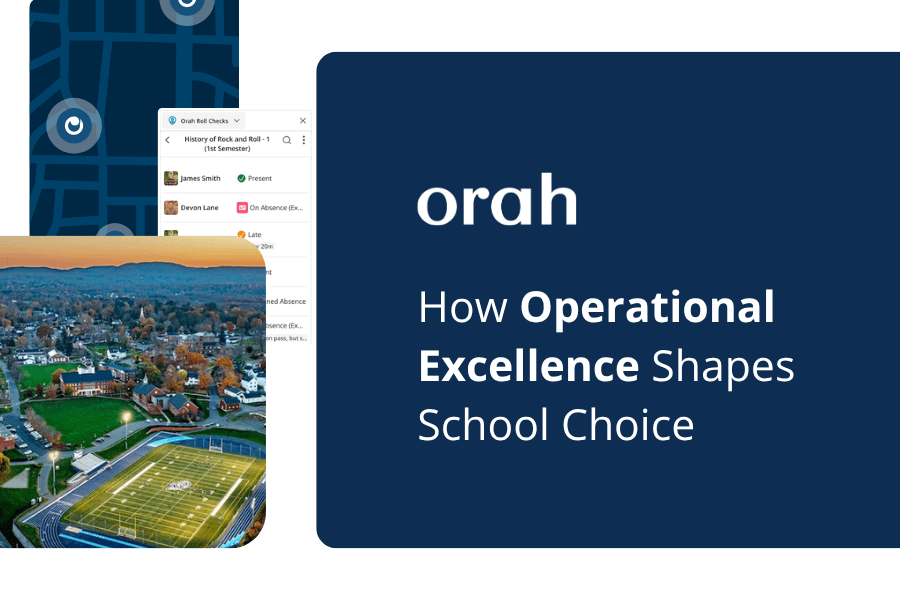Book Summary: Contextual Wellbeing by Dr. Helen Street
Paul Organ
•
July 15, 2022


Summary
Dr. Helen Street (founder of Positive Schools) covers the current climate of wellbeing at schools and where our efforts are misserving us. Her assessment of the landscape points to the core of the problem being our focus on the individual rather than a perspective that includes the broader context of the student's environment.
Too often, if a student is unmotivated, disengaged and interrupted in the classroom, we ask ‘what is wrong with them?’ But perhaps we are frequently asking the wrong question. The student may be demonstrating a perfectly ‘well’ response to a context that is non-nurturing, unhealthy or unhelpful.’
Street details where our current wellbeing efforts are failing us and offers her framework for ‘Contextual Wellbeing’ as the solution.

Key Points
What is wellbeing?
Helen touches on a concise definition of wellbeing which I think helps to understand the perspective of the book as a whole. She describes wellbeing as:
“....something to do with embracing life proactively, but we are aware too that it is also about the acceptance of things we can’t control.”
With that in mind, it helps to know what Street’s goal may be for a student that is a part of a wellbeing system within a school.
Nothing works without healthy staff
We learn throughout the book that the relationships between students, parents, and staff are paramount to a successful wellbeing program. Street makes a clear case for the notion that it doesn’t matter how well-thought-out a wellbeing program is, it can’t be implemented properly without healthy and engaged staff.
“...although students associate schools with academics, their relationships with their friends, their teachers and other school staff members play the biggest part in determining the emotional quality of their school experience.”
Applying this at your school
Using simple eNPS software (Employee Net Promoter Score) can be a quick way to gauge how your staff feels about working within your school. We will also be looking at ways to track staff wellbeing within Orah.
Parents are collaborators in a student’s journey
Due to traditional lines of communication with parents and the physical separation, we’re still in the habit of viewing parents as separate stakeholders rather than fellow educators in the lives of our students. Education is not something that is confined within the walls of school and communication is no longer confined to mail, so the separation no longer makes any sense.
This is something that we’ve been contemplating here at Orah, so I couldn’t agree more - I suppose the first thing that comes to mind when we think about this as a company, is helping each school define how this relationship works with their parents.
Managing this relationship will take deep thought for each school as this could quickly turn into a situation that welcomes more debate than necessarily needed, therefore it’s an exercise to understand how to collaborate in a way that brings out the strengths of both parties.
Applying this at your school
This starts with a very important conversation internally about what your school would like the relationship between the school and parents to look like - specifically how you would like a collaboration to work. Where you would like complete transparency and perhaps where you would like more control around what parents would know. Once you have defined what this would look like you can begin looking at systems and processes that facilitate this relationship.
Extrinsic vs intrinsic motivation

Street discusses the pitfalls of ‘bribing’ our youth with extrinsic motivators such as rewards, praise, or adulation in return for performance.
This creates a reliance on extrinsic motivation which results in a number of issues both as an individual and socially among peers.
The principal concern is the diminishing use or discovery of a student's intrinsic motivation which is an extremely powerful tool and I believe should be one of the top priorities for schools to help students to understand before they embark on their journey into the ‘real world’.
Applying this at your school
Extrinsic motivators are so deeply ingrained, particularly in western society, and therefore learning about intrinsic motivation and how to facilitate this within your community will be the starting point for most teams. You need to ensure that your community is in alignment with respect to the benefits of fostering an environment that allows students to find their intrinsic motivators.
(This is spoken about extensively in the book ‘Drive’ by Daniel Pink if you’d like to do some more reading on this.)
Is competition entirely unhealthy?
Helen doesn’t deny the benefits of competition, especially on the sports field but argues strongly against the overuse of competition in everything else we do in our schools.
This competitive environment promotes a focus on the outcome and on “placing above others” vs enjoying the process or allowing students to follow their curiosities along the way. Street also argues that it breeds obedience and conformity, due to setting pre-determined ideas of success or achievement. Placing one’s wellbeing extrinsically on the results of competition leads to many issues with depression and anxiety due to the never-ending pursuit of improvement which assumes that you’re never really good enough. Instead, Helen encourages schools to create an environment of cohesion and social inclusion.
Applying this at your school
I find this one particularly difficult to envision within today’s schools which I think is due to the environment I was surrounded by while at school myself. To start I believe schools could implement tactics that encourage more group cooperation toward creative pursuits that don’t have objectively correct answers or results.
Where you learn matters as much as what you learn
Simple but often overlooked contributing factors to your wellbeing come from your physical environment. Allowing students to have a say in their environment, proactively prioritizing ‘outside time’, and creating light-filled spaces are all important in a healthy environment for young minds (and old!).
Applying this at your school
Create more opportunities for outdoor time - practically any class can be taken outdoors, you just have to accept that it would be hard to objectively weigh up the benefits at the moment. Remember that the subconscious mind is working here, and help students (and your staff) to connect and ground themselves when amongst the natural environment.
Trophies, medals, and newspaper articles - what does that mean for a school?
Hallways adorned with awards, trophies and high achievement may position a school as high status and perhaps impress some parents, however internally this can have detrimental effects on students according to Street. By putting high achievement on a pedestal there is an implication that anything ‘beneath’ that isn’t good enough - and unless a student’s home life and social network are reminding them that this isn’t the case, it can often have a negative impact on a students sense of self-worth and achievement. Personally, I believe schools with a history of prioritizing high performance don’t have to suddenly hide trophies and be ashamed of their past successes, however, there could be more subtle changes. Include imagery of key moments within a school’s community to encourage equity, cohesion, and community.
Applying this at your school
Help students by including more examples and celebration of equality and inclusion. This doesn’t mean you have to be ashamed of school achievements, however, you may bring more balance by introducing instances where students or other members of the community have displayed values that aren’t competitive by nature. This helps to ‘equalise’ at students pressure to succeed extrinsically and instead take a more conscious approach to social cohesion.
Social cohesion
Students will naturally form their own social circles, but Street makes the case for ensuring all students feel welcome and able to be themselves within the community. This can be achieved through a focus on cohesive values rather than competition and status. For teachers, forming strong and positive relationships with all students is vital in this process, says Street.
Evaluation
I found the book insightful and can imagine it would be very useful for schools who are trying to navigate this rapidly evolving subject of wellbeing.
Helen is not directly linked to any particular school so she’s able to give a candid overview of what’s not working across the many schools she’s had exposure to. These insights haved helped to confirm many of the assumptions that are feeding into our product and what to avoid when implementing change in this area within schools.
From a personal perspective, the book prompted me to reflect on my own contextual wellbeing and what elements I can incorporate into my life in order to improve my situation holistically.
Encouragingly, this book further validates our company’s efforts in focusing on ‘Student Engagement’. Through our initial work in boarding schools, we recognized that wellbeing is not deduced from one data set that depicts activity or behaviour from one segment of a student’s life. Instead, there are many indicators in a student's life that could point to their level of satisfaction or wellbeing and specifically what factors are impacting their wellbeing outside of the classroom.
If you're interested in learning more from Helen, we have a webinar coming up where we'll discuss Contextual wellbeing in more detail.
Download your guide to knowing where students are
When you sign up, we'll send you a guide detailing what it takes to setup your daily operations to maintain student location awareness using your routine school processes like attendance, student leave, late arrivals, early dismissals & emergencies. You'll also recieve an invite to join the Orah community and get the quarterly newsletter.

.jpeg)












